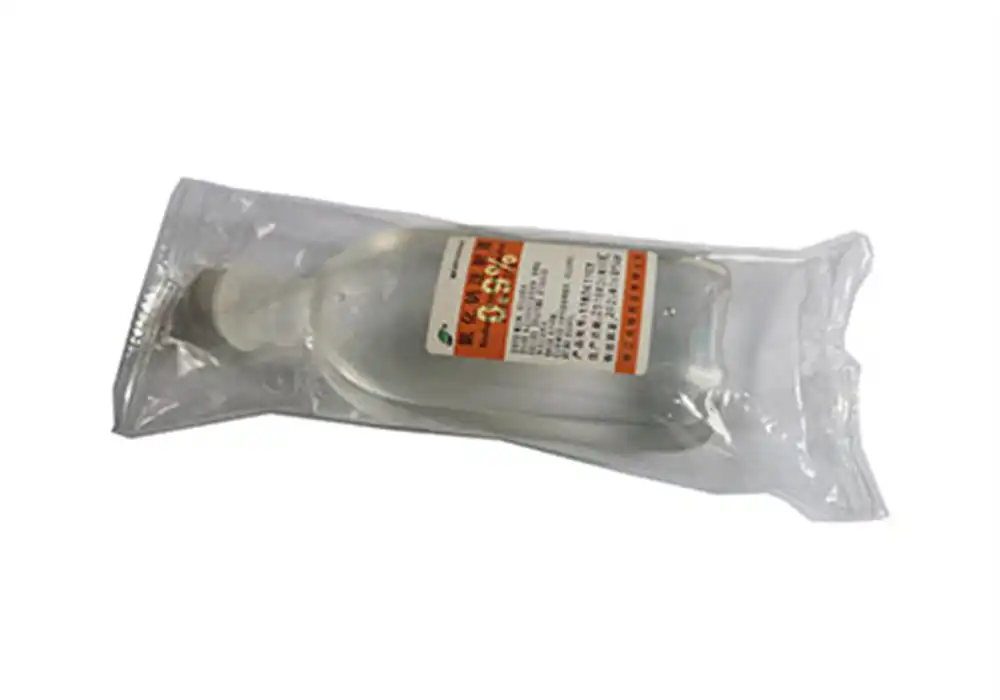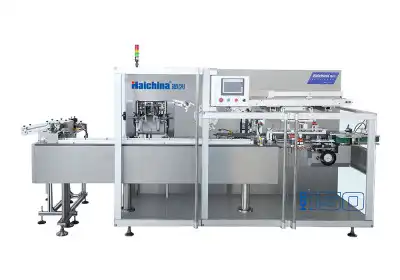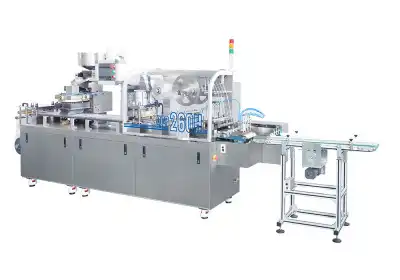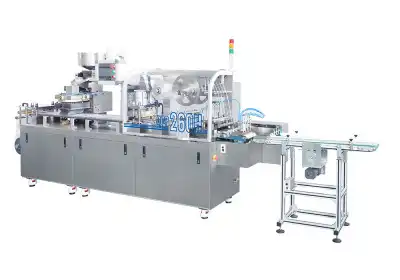Understanding Pillow Packing and VFFS Technologies
Pillow Packing Machine: Features and Benefits
Pillow packing machines are designed to create the classic pillow-shaped package that many consumers associate with snack foods. These machines form, fill, and seal packages in a horizontal orientation, utilizing a continuous roll of packaging film. The process involves folding the film around a forming collar, sealing it longitudinally, and then creating transverse seals to form individual packages.
Key advantages of pillow packing machines include:
- Simplicity in design and operation
- Cost-effectiveness for smaller production runs
- Ability to handle a wide range of product sizes
- Compact footprint, ideal for limited floor space
VFFS Machine: Capabilities and Advantages
Vertical Form Fill Seal (VFFS) machines operate by forming a tube of packaging material vertically, filling it with product, and then sealing and cutting it to create individual packages. This technology offers high-speed packaging capabilities and is widely used in the snack food industry.
Benefits of VFFS machines include:
- Higher production speeds compared to pillow packing
- Versatility in package styles and sizes
- Excellent for fragile products due to shorter drop distances
- Integration capabilities with weighing and dosing systems
Comparative Analysis: Pillow Packing vs VFFS
When comparing pillow packing and VFFS technologies, several factors come into play:
- Speed: VFFS machines generally offer higher production rates
- Flexibility: VFFS provides more package style options
- Product Compatibility: Pillow packing excels with certain snack types
- Cost: Pillow packing machines are often more budget-friendly
- Maintenance: VFFS may require more complex maintenance procedures
Factors Influencing Packaging Output Optimization
Product Characteristics and Packaging Requirements
The nature of the snack product plays a crucial role in determining the most suitable packaging method. Factors such as product fragility, size, and shape must be considered. For instance, delicate chips might benefit from the gentler handling of a VFFS machine, while dense, compact snacks could be efficiently packaged using a pillow packing system.
Additionally, packaging requirements such as barrier properties, resealability, and branding opportunities can influence the choice between pillow packing and VFFS technologies. Some snack manufacturers may prioritize the traditional pillow pack aesthetic, while others might require the versatility of VFFS for creating stand-up pouches or other specialized formats.
Production Volume and Scalability
The scale of production is a critical factor in choosing between pillow packing and VFFS machines. For smaller operations or niche product lines, the lower initial investment and simplicity of pillow packing machines can be advantageous. However, as production volumes increase, the higher speeds and efficiency of VFFS systems become more attractive.
Scalability is another important consideration. VFFS machines often offer more flexibility in terms of upgrading and expanding production capabilities, making them a suitable choice for growing businesses anticipating increased demand.
Operational Efficiency and Cost Considerations
Optimizing packaging output goes beyond just speed; it also involves minimizing downtime, reducing waste, and maximizing overall operational efficiency. In this regard, factors such as changeover times, maintenance requirements, and operator skill levels come into play.
Cost considerations extend beyond the initial equipment investment. Ongoing expenses such as energy consumption, packaging material costs, and labor requirements should be evaluated. While VFFS machines may offer higher output rates, they might also incur higher operational costs compared to simpler pillow packing systems.
Implementing the Right Packaging Solution for Your Snack Production
Assessing Your Specific Packaging Needs
To determine whether a pillow packing machine or a VFFS system is the optimal choice for your snack packaging needs, conduct a thorough assessment of your production requirements. Consider factors such as:
- Current and projected production volumes
- Variety of products and package sizes
- Available floor space and facility layout
- Budget constraints and ROI expectations
- Workforce skills and training capabilities
Integration with Existing Production Lines
The chosen packaging solution should seamlessly integrate with your existing production processes. Evaluate how each option would fit into your current setup, considering factors like:
- Compatibility with upstream and downstream equipment
- Impact on production flow and efficiency
- Potential need for additional auxiliary equipment
- Flexibility to accommodate future production changes
Future-Proofing Your Packaging Operations
As the snack food industry continues to evolve, it's essential to choose a packaging solution that can adapt to changing market demands and technological advancements. Consider the following aspects when making your decision:
- Ability to accommodate new package designs and materials
- Upgradability and modularity of the equipment
- Potential for automation and Industry 4.0 integration
- Manufacturer support and availability of spare parts
Conclusion
In the debate between pillow packing and VFFS machines for optimizing snack packaging output, there's no one-size-fits-all solution. Each technology offers distinct advantages and is suited to different production scenarios. Pillow packing machines excel in simplicity and cost-effectiveness for smaller operations, while VFFS systems provide higher speeds and greater versatility for larger-scale production. The key to making the right choice lies in carefully assessing your specific needs, considering factors such as product characteristics, production volume, and long-term business goals. By thoroughly evaluating these aspects, you can select the packaging solution that will best optimize your snack packaging output and drive your business forward.
FAQs
1. Which machine is better for packaging fragile snacks?
VFFS machines are generally preferred for fragile snacks due to shorter drop distances and gentler handling.
2. Can pillow packing machines handle high-volume production?
While pillow packing machines can handle moderate volumes, VFFS machines are typically better suited for high-volume production.
3. Are VFFS machines more expensive than pillow packing machines?
Generally, yes. VFFS machines tend to have a higher initial cost but offer greater versatility and higher production speeds.
4. Which system is easier to maintain?
Pillow packing machines often have simpler designs, making them easier to maintain compared to more complex VFFS systems.
Optimize Your Snack Packaging with Haichina's Expert Solutions
At Haichina, we specialize in providing cutting-edge packaging solutions tailored to your specific snack production needs. As a leading manufacturer and supplier of packaging equipment, we offer both pillow packing machines and VFFS systems designed to optimize your output. Our expert team can guide you through the selection process, ensuring you choose the perfect solution for your business. With our fully customizable, CE and cGMP-certified machines, you'll benefit from increased efficiency, reduced downtime, and superior packaging quality. Contact us at [email protected] to discover how we can elevate your snack packaging operations.
References
Johnson, M. (2022). Advanced Snack Packaging Technologies: A Comparative Study. Journal of Food Processing and Packaging, 45(3), 112-128.
Smith, A. R., & Brown, L. K. (2021). Optimizing Production Efficiency in the Snack Food Industry. Industrial Engineering Review, 18(2), 76-92.
Garcia, E. F. (2023). The Impact of Packaging Technology on Snack Food Quality and Shelf Life. Food Science and Technology International, 29(4), 301-315.
Thompson, R. D., & Lee, S. H. (2022). Cost-Benefit Analysis of Packaging Systems in Small to Medium-Sized Snack Enterprises. International Journal of Food Engineering, 14(1), 45-60.
Wilson, C. M. (2021). Sustainability in Snack Food Packaging: A Review of Current Technologies and Future Trends. Packaging Technology and Science, 34(6), 418-433.
Zhang, Y., & Patel, N. (2023). Industry 4.0 and the Future of Snack Food Packaging Automation. Journal of Manufacturing Systems, 57, 215-230.





